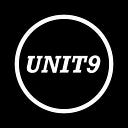AI is often viewed as the death of creativity. Yet, as UNIT9’s Maximilian Niemann points out, when machines are used in collaboration with humans, it may actually make for better work.

Artificial Intelligence (AI) is not traditionally linked to the emotion-fuelled craft of creativity. Being perceived as a uniquely human skill, we love to think creativity remains the ultimate holy grail, impossible to be replicated by a machine at all.
But the potential of AI has already been used in a creative capacity across the Arts — writing song lyrics, applying painting styles — and lately now in cinema. Still, it’s hard to escape the intimidation of AI and the belief that data-driven processes ‘undoubtedly’ dampen the creative results — or worse, make human involvement obsolete entirely.
Warner Brothers has recently signed a deal with Cinelytic, whose smart technology can predict box office success before production even begins, and offers suggestions on the most profitable actors to use to boost popularity. But is repeating the same successful formula over and over again considered to be creative at all?
Looking at this topic from the perspective of filmmakers, let’s focus on the shades in between black and white. What if AI was used to form a creative partnership where humans and machines work together, not against each other? Would it still spell doom for the future of cinema?
Filmmaking is a multi-faceted form of creativity. It’s not something that originates and forms from one person only — it’s very much a collaborative process. Treating an AI as a collaborator effectively brings a new person to the table, offering a different opinion and a fresh outlook. It’s like introducing an additional writer to the writer’s room or welcoming an assistant editor to the montage.
A machine can store a considerable amount more knowledge than a person, which arguably makes this new opinion more valuable. It can open up a conversation about different approaches that haven’t been considered, things the human mind would never have thought up. It can push storytelling forward by generating an almost limitless amount of ideas and inspiration for human creatives to bounce off.
It also can make the process faster. A lot faster. An AI can complete tasks in a fraction of the time it would take a human, and instead of seeing this as a threat, filmmakers might start seeing it as a practical resource.
While an editorial team can spend up to a month watching and selecting shots for a trailer, IBM Watson proved its worth by cutting this process down to less than a day. In making the trailer for the horror movie Morgan, the AI system picked out the ten key moments that would keep audiences on the edge of their seats before passing this content over to the in-house filmmaker to complete the edit — an incredibly efficient partnership that saved the company time and money.
Another example of this human/machine workflow working to full effect is in our latest production Fellini Forward, an AI-infused short film created by Campari, Wunderman Thompson Italy, and UNIT9. As part of the drinks brand’s Red Diaries series, the film uses AI to bring the creative genius of Federico Fellini to life, learning from his past transcripts to create a whole new piece of cinema that should feel authentically Felliniesque. From scriptwriting to pre-visualisation, the AI worked alongside the film team and came up with its “Fellini Vision” for the script, edit and camera work.

In general, when working with AI in a creative capacity you first need to train it to behave and ‘think’ a certain way to generate outputs in line with the creative vision. But using historical data in this way does have an obvious downside: the new output could reflect previous success rather than pioneering true innovation. It runs the risk of essentially regurgitating past creations rather than experimenting with truly ‘new’ ideas (if there is such a thing). And this is where human involvement is vital in the process — to step in and disrupt the AI’s cycle of creation, to take the seed of an idea and build on it to create something entirely unique and different.
Of course, working with AI and training data from past creatives can raise ethical questions of authorship. Who is the creator of a piece of art that has been crafted with AI — the operator? The coder? The previous author the AI learned from? As creators experimenting with this technology, it’s something we have to bear in mind.
So while there are certain pitfalls to watch out for, when harnessed correctly AI can stimulate the filmmaking process and create new cinematic work that truly breaks creative boundaries. The key to success is for humans and machines to work together to reap the full rewards of their respective strengths.
Maximilian Niemann, Film & Creative Director, UNIT9
Originally published in Creative Review, November 2021.
